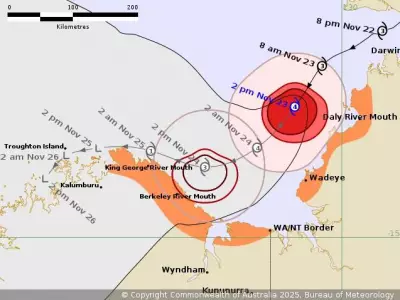
Australia's beloved echidnas are rewriting the seasonal calendar, with new research suggesting these spiky monotremes are ending their winter hibernation significantly earlier than in previous decades. Dubbed the 'Christmas creep,' this phenomenon has scientists and wildlife enthusiasts alike asking whether climate change is altering the fundamental rhythms of our native species.
The Early Risers of the Australian Bush
University of New England researcher Dr. Peggy Rismiller, who has studied echidnas on Kangaroo Island for over three decades, has observed a dramatic shift in hibernation patterns. "When I first started working with echidnas, it was rare to see them before mid-August," Dr. Rismiller notes. "Now we're regularly spotting active echidnas in late July."
This isn't just an isolated observation. Citizen science data from platforms like EchidnaCSI shows similar patterns across southeastern Australia, with earlier spring appearances becoming the new normal.
Climate Connections: The Temperature Trigger
The driving force behind this seasonal shift appears to be rising temperatures. Echidnas, being ectotherms, rely on external temperatures to regulate their body functions. As winter temperatures gradually increase, the environmental cues that normally keep them in hibernation are changing.
"Echidnas emerge when soil temperatures reach about 14-16 degrees Celsius," explains Dr. Rismiller. "With warmer winters becoming more common, these temperature thresholds are being met earlier in the season."
What This Means for Australia's Favourite Spiky Mammal
While seeing echidnas earlier might seem harmless or even delightful, researchers are concerned about potential ecological consequences:
- Food Source Timing: Earlier emergence could misalign with the availability of their primary food sources—ants and termites
- Reproductive Challenges: Breeding cycles may become desynchronized from optimal environmental conditions
- Energy Expenditure: Longer active periods require more energy reserves, which could stress populations during poor seasons
A Canary in the Coal Mine?
The echidna's changing habits serve as an important indicator of broader environmental shifts. As Dr. Rismiller observes, "When we see consistent changes in well-established biological patterns like hibernation, it's telling us something significant is happening in our ecosystems."
This research highlights how climate change isn't just about extreme weather events—it's also about subtle but profound alterations to the seasonal rhythms that have governed Australian wildlife for millennia.
For now, the early appearance of these charismatic creatures provides both a delightful surprise for wildlife watchers and an important reminder of our changing environment. As one researcher put it, "The echidnas are trying to tell us something—we just need to listen."





